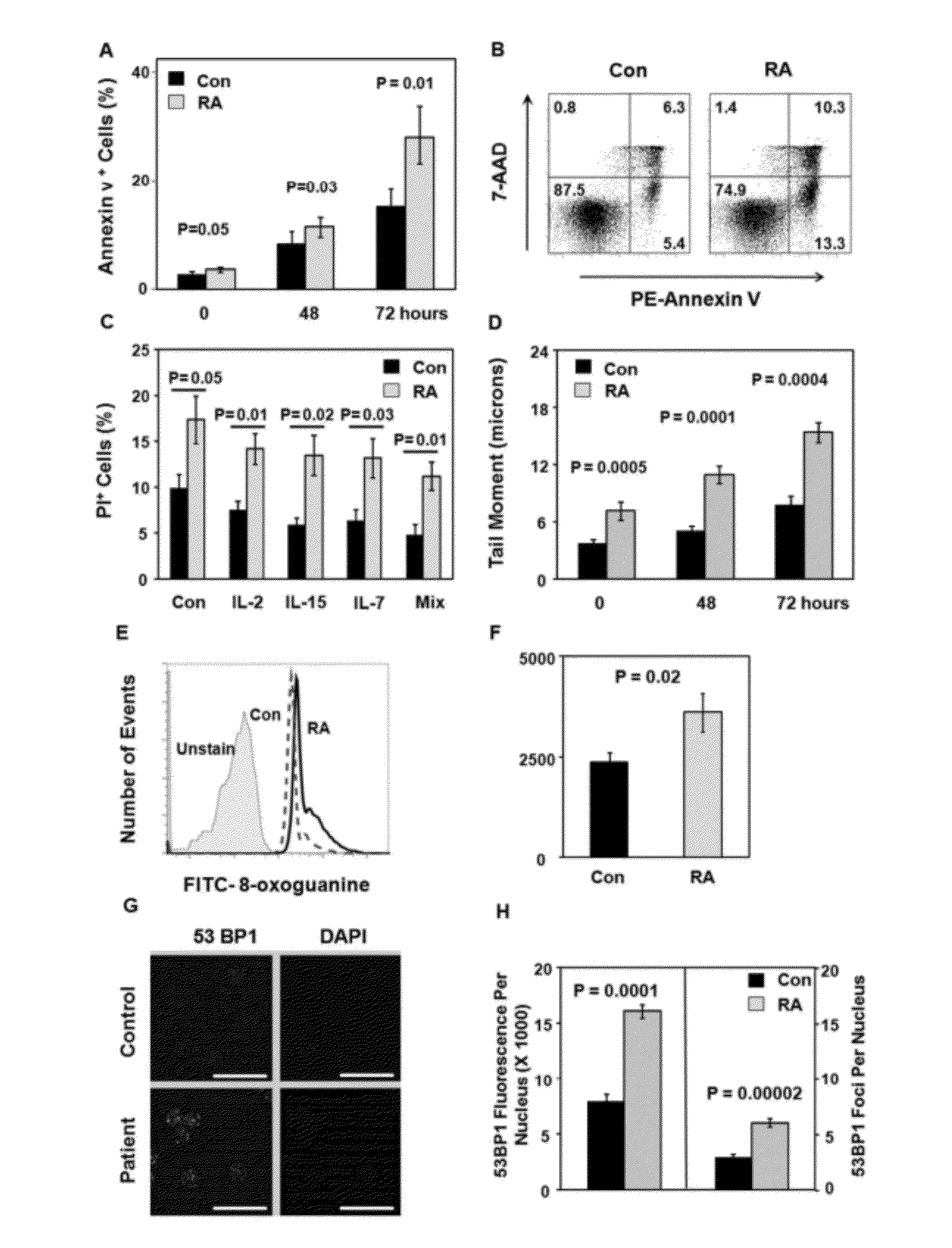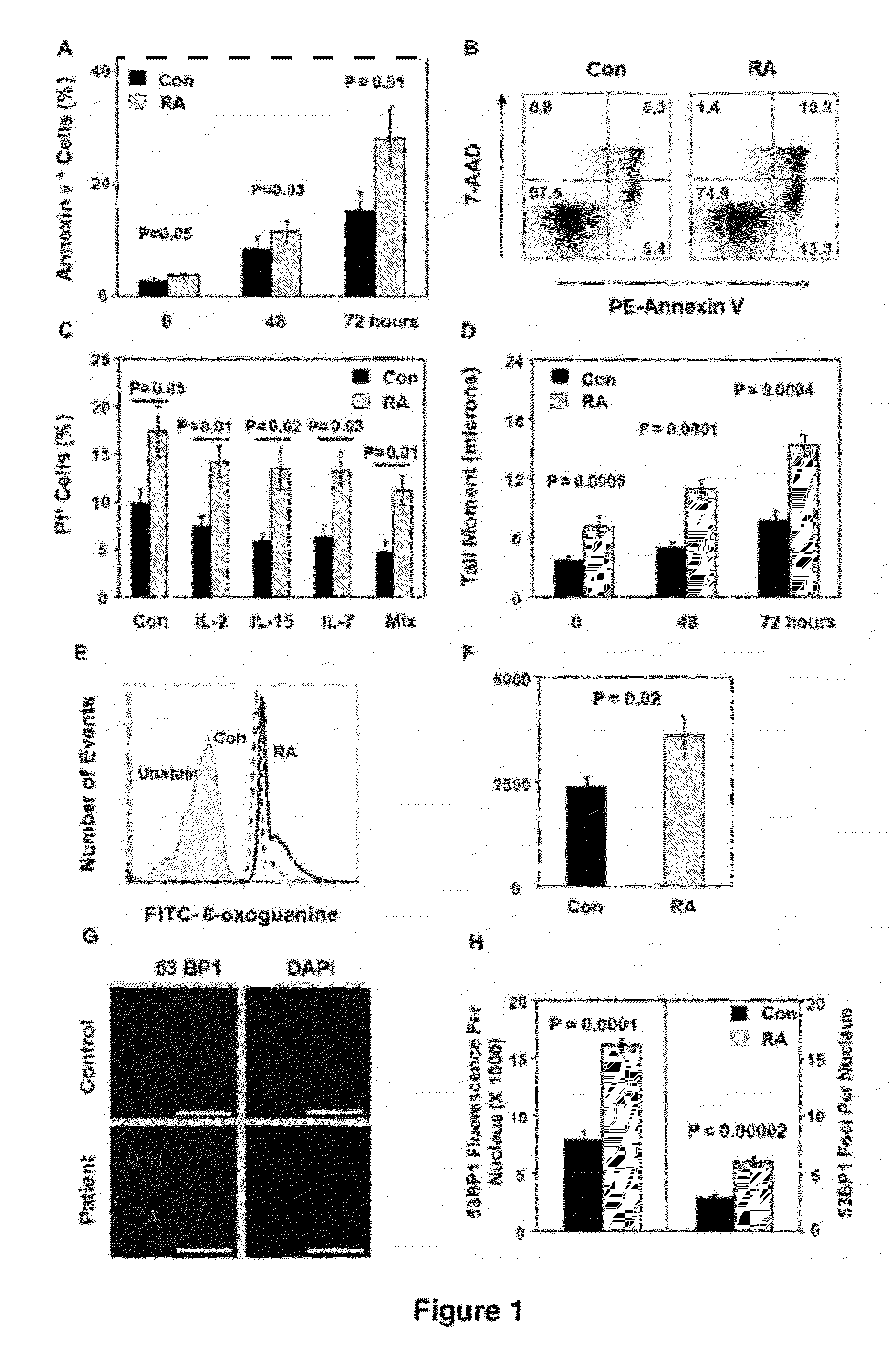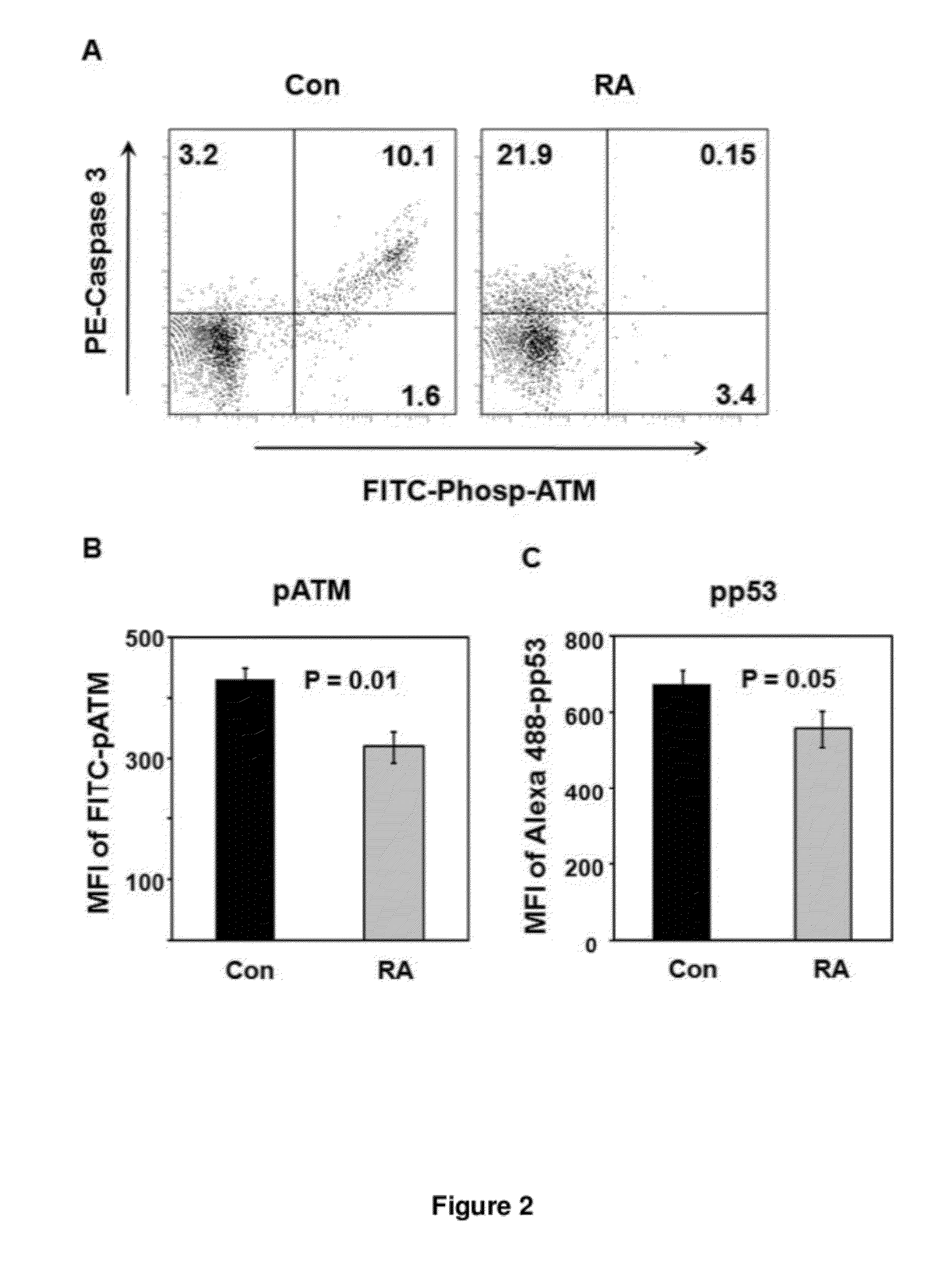Immune System Function in Conditions Characterized by Elevated Double Strand Breaks
a double strand break and immune system technology, applied in the field of immune system function in conditions characterized by elevated double strand break, can solve the problems of increased apoptosis rate in these lymphocytes, accumulation of dna damage, and inability to age-appropriate telomeric shortening, so as to promote non-homologous end-joining, improve immune system function, and promote double strand break repair
- Summary
- Abstract
- Description
- Claims
- Application Information
AI Technical Summary
Benefits of technology
Problems solved by technology
Method used
Image
Examples
example 1
[0183]In rheumatoid arthritis (RA), the process of T-cell aging is accelerated (Goronzy J J and Weyand C M (2005) Immunol Rev 204: 55-73; Weyand C M, et al. (2009) Nature Review Rheumatology 5(10): 583-588). Telomeres of CD4 T cells are age-inappropriately shortened and clonal populations of CD28-deficient T cells accumulate (Koetz K, et al. (2000) Proc Natl Acad Sci USA 97(16): 9203-9208; Schonland S O, et al. (2003) Proc Natl Acad Sci USA 100(23): 13471-13476). Premature senescence not only involves memory T cells engaged in chronic inflammatory lesions, but is most pronounced among naïve T cells unprimed by antigen. Two recent studies have identified novel mechanisms causing premature immunosenescence in RA (Fujii H, et al. (2009) Proc Natl Acad Sci USA 106(11): 4360-4365; Shao L, et al. (2009) J Exp Med 206(6): 1435-1449). Naïve RA T cells were found to be apoptosis susceptible, a defect mechanistically linked to insufficiency of the enzyme telomerase (Fujii H, et al. (2009) Pro...
PUM
| Property | Measurement | Unit |
|---|---|---|
| time | aaaaa | aaaaa |
| time | aaaaa | aaaaa |
| time | aaaaa | aaaaa |
Abstract
Description
Claims
Application Information
 Login to View More
Login to View More - R&D
- Intellectual Property
- Life Sciences
- Materials
- Tech Scout
- Unparalleled Data Quality
- Higher Quality Content
- 60% Fewer Hallucinations
Browse by: Latest US Patents, China's latest patents, Technical Efficacy Thesaurus, Application Domain, Technology Topic, Popular Technical Reports.
© 2025 PatSnap. All rights reserved.Legal|Privacy policy|Modern Slavery Act Transparency Statement|Sitemap|About US| Contact US: help@patsnap.com



